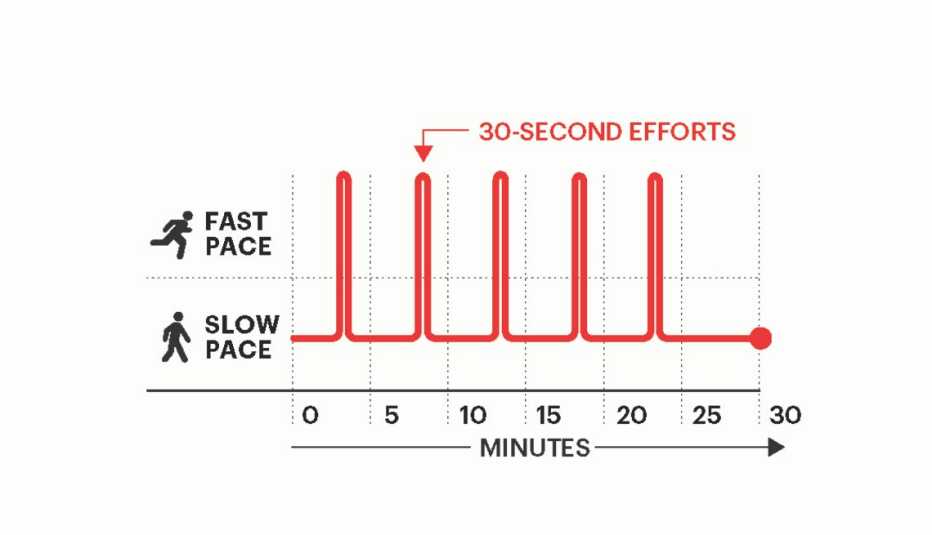AARP Hearing Center
Fitness marketers often use extreme language (“Breakthrough!” “Miraculous!”) to describe the latest hot workout or gear. But scientists and doctors are now using superlatives to discuss what many consider to be one of the most important new fitness approaches in decades: high-intensity interval training, or HIIT, an approach to exercise that people can do in relatively little time, but with oversize benefits.
If you ever did wind sprints in high school, then you know what HIIT is — brief bursts of very intense exercise followed by periods of slower, less-demanding work. Studies are showing that HIIT is an effective way for older people to build muscle, regulate insulin, cut fat and increase heart function. And for people just starting HIIT, it may take as little as one minute of hard work three times a week to see marked improvements.
Perhaps most exciting of all: HIIT seems to be able to turn back the clock on a cellular level, improving the function of mitochondria (the battery cells of the body). And the older you are, the greater its impact, according to studies. Example A: Robert Marchand, who turns 107 this month.


When he was 101, Marchand set a world record for how far a centenarian cyclist could ride in an hour. But today, Marchand appears to be getting even stronger than he was when he set the record — so much so, in fact, that in the past few years his peak pedal power has increased by an incredible 40 percent. When measured last year, Marchand had the fitness level of the average 50-year-old, thanks to HIIT.
Here are just a few of the other ways HIIT can improve your life.
- Boost your youth hormones. A study of 22 sedentary men in their 60s found that regular exercise plus HIIT sprints on a bike increased their testosterone by 17 percent in 12 weeks.
- Recharge your cells. Researchers at the Mayo Clinic found that people ages 65 to 80 who incorporated HIIT into their walking or biking programs made more proteins for their energy-producing mitochondria, effectively slowing down aging at a cellular level.
- Lose your belly. Another study of sedentary women compared 20 minutes of HIIT with 40 minutes of steady-state exercise. The HIIT subjects were the only ones who lost fat — primarily belly fat.
- Protect your heart. In a study of nearly 5,000 people with heart disease, researchers found that HIIT did more to protect the subjects from future heart problems than traditional moderate workouts.
- Keep active longer. A Japanese study put 696 people of middle age or older on a walking program that incorporated HIIT training. Seventy percent were still doing the workout 22 months later.


For expert tips to help feel your best, get AARP’s monthly Health newsletter.
If you are still thinking I’m too old for wind sprints, here’s the good news: You can get all the benefits of HIIT just by tweaking whatever exercise you do today. And if you’re not exercising, you can unlock the benefits of HIIT by walking — for as little as 10 minutes. Here are three programs you can add to your current workout, whether you’re a swimmer, a biker, a runner or just looking to take a brisk walk.


































































